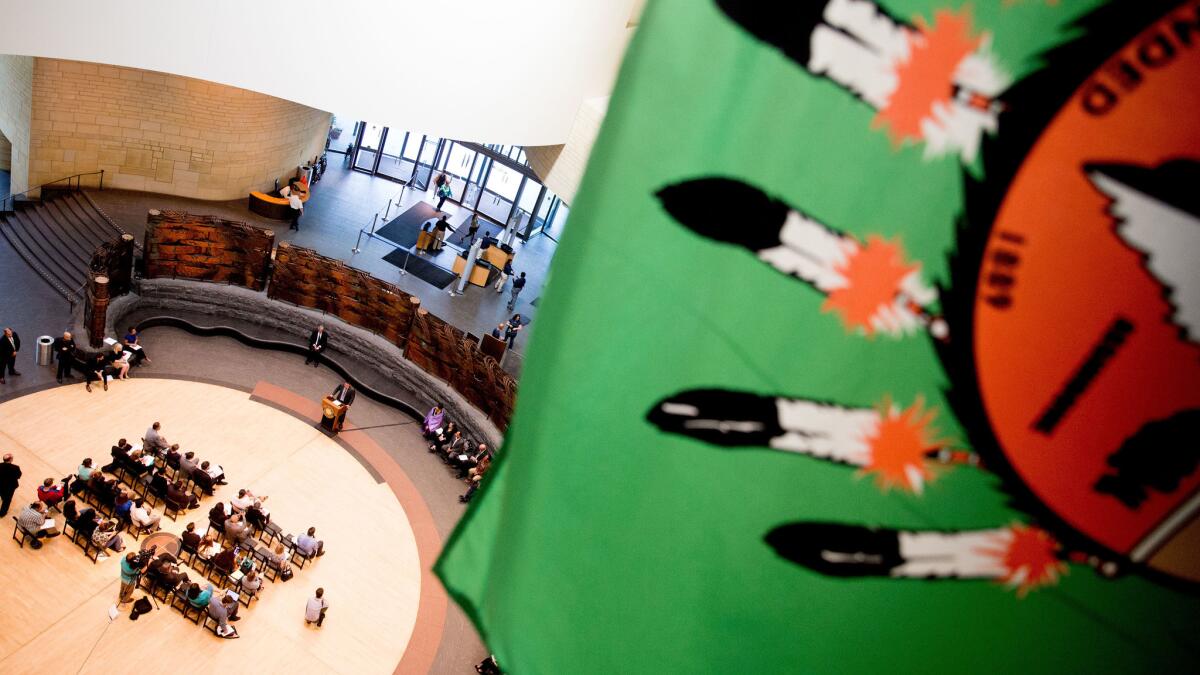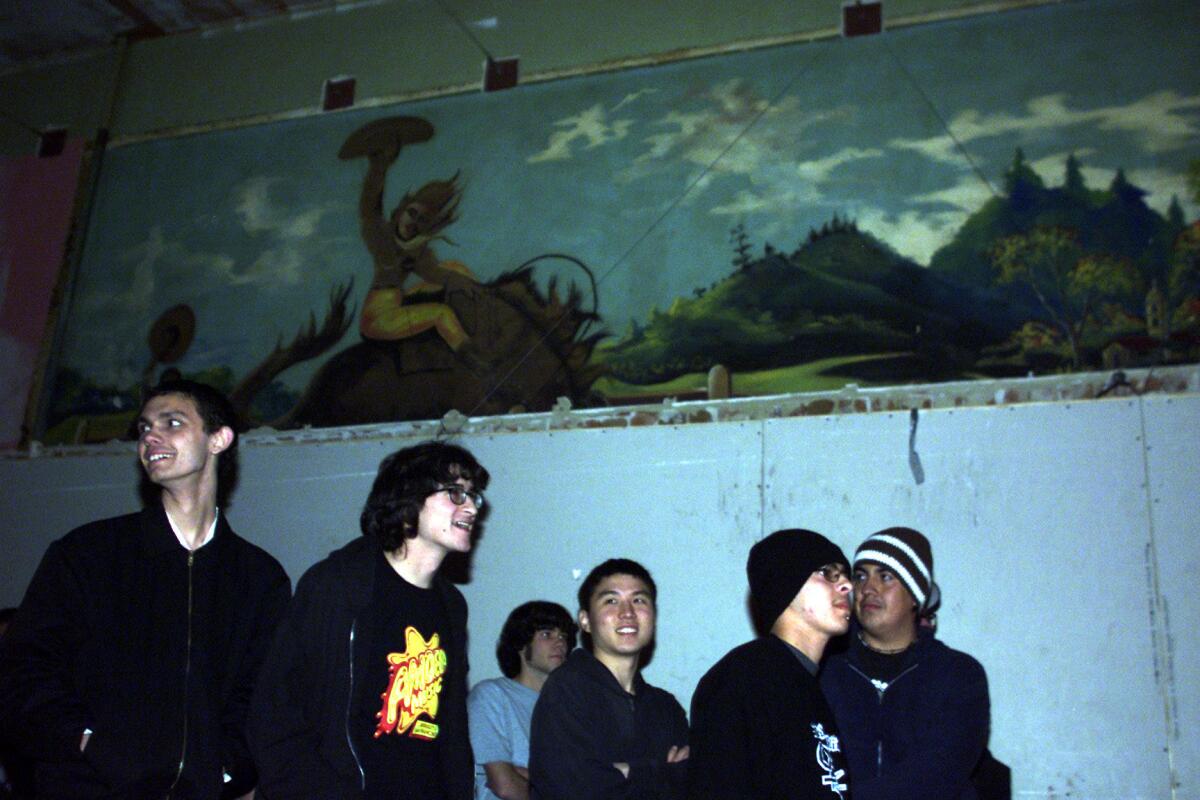Roundup: George W. Bush hacker guilty, UC San Diego closes gallery, a socially conscious architecture biennial

- Share via
Hacker who leaked presidential paintings pleads guilty. UC San Diego shuts down its art gallery amid a storm of criticism. SFMOMA in copycat pastry debacle. And, the downtown L.A. culture strip that is facing demolition. Plus, reviews of the Venice Architecture Biennale are starting to pour in and Alexandra Lange looks at the way a pair of high-falutin’ park designs have been received in London and New York. Here’s the Roundup:
— The Romanian hacker known as Guccifer, who revealed that former George W. Bush was making paintings, pleads guilty to breaking into the former president’s email. (Artnet)

— The National Museum of the American Indian held an emergency meeting about a Paris auction that trafficked in Indian spiritual items. The auction house’s response: The tribes are welcome to buy their stuff back at auction. Has to be read to be believed.
— UC San Diego is shutting down its art gallery to employ the building as classroom space — making it the only UC campus not to have a designated space in which to display art. Students and others have launched a petition in support of keeping the gallery open. Call me crazy, but I thought a gallery was a classroom...

— An Illinois town has just figured out that a decade-old mural depicts a scene from an infamous image of an Indiana lynching.
— The microscopic eruptions that can destroy paintings. Awesome science and art conservation geekery. (Weisslink)
— Cake or death: SFMOMA’s new cafe has art-inspired cakes on its menu. The problem is that the art-inspired cakes were the brainchild of a pastry chef no longer associated with the museum. I imagine the museum will simply bill the new cakes as a work of appropriation.
— In New York, a new art project invites people to confess their “sins” of gentrification. This self-flagellation would be way more awesome if it involved whips.
— Andes Hruby writes a moving essay about being photographed by Robert Mapplethorpe as a child.
— In the Netherlands, repurposing prisons as refugee centers.
— When crime is art — a fascinating piece by Andrew Russeth.
— “It is the public, consulted after the fact, who will have to pay part of the bill.” Alexandra Lange picks apart New York’s and London’s plans for two different Thomas Heatherwick-designed, super expensive above-water parks. Essential reading about private money and public space.
— “A feature that seems more appropriate to the Las Vegas strip than the Fort Worth cultural district.” Architecture critic Mark Lamster is no fan of the new landscaping plans for the parking lot around the Louis Kahn-designed Kimbell Art Museum in Fort Worth.
— How construction in one part of Houston leads to flooding in another — the type of environmentally disastrous suburban development that is all too often subsidized by taxpayers.
— Speaking of subsidies: Apparently a well-to-do development company is in need of “financial aid” from the city of L.A. to build hotels and luxury apartments across from Disney Hall. Because what the taxpayers of L.A. need to be subsidizing is more non-affordable housing.

— In even more dire news for downtown: The Smell, the Jalisco bar and the Downtown Independent theater on Main Street are threatened with demolition. The Jalisco should be a neighborhood landmark as far as I’m concerned. What would downtown L.A. be without this wondrous combo of nightclub, Mexican gay hangout and indie movie screening room? CORPORATE AND BORING.
— Christopher Hawthorne reviews Alejandro Aravena’s Venice Architecture Biennale: “In thematic terms it means a show dedicated to the importance of incremental and bottom-up progress; what the north can learn from the south and the west from the east.” Plus: Reviews from Rowan Moore and Oliver Wainwright in the Guardian.
— How one African architect has made Modern buildings employing traditional materials and techniques. Inga Saffron writes about the innovative work of Francis Keré , currently on view in Philadelphia.
— Neanderthal stalagmite architecture.
— A Stanford historian and a Tijuana artist team up to tell the story of braceros, the more than 2 million Mexican guest workers who tilled U.S. fields between 1942 and 1964.
— A terrific essay by Rebecca Carroll on the black cultural moment.
— And bringing some joy to a post-holiday Tuesday: A skater gets groovy to “Jolene.”
Find me on Twitter @cmonstah.
More to Read
The biggest entertainment stories
Get our big stories about Hollywood, film, television, music, arts, culture and more right in your inbox as soon as they publish.
You may occasionally receive promotional content from the Los Angeles Times.










